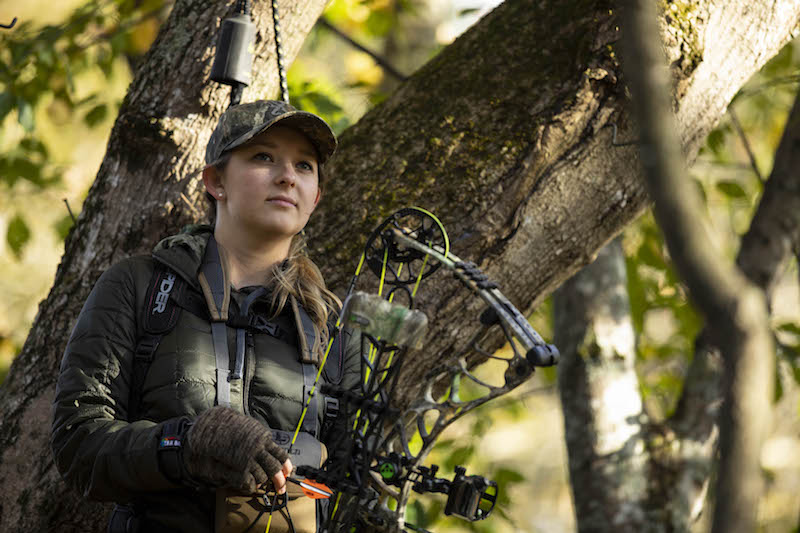The early mornings, late nights, long sits and endless walks never get old during bowhunting season. But once it’s over, exhaustion sets in. When that happens, do you kick off your boots, and stash your full pack in the closet until next year? Let’s hope not!
You must care for your gear during the offseason. Not only is it unpleasant to discover last year’s moldy snacks in your pack, but improper care often damages equipment and requires costly replacements.
A bit of effort keeps your gear ready to rock next season.

Remove everything from your backpack and clean it. Photo Credit: ATA
At season’s end, it’s best to remove everything from your backpack. Dump and dig through every pocket because it’s easy for snacks or wrappers to get lost during the season. You don’t want to pull your pack out this fall, only to find a hole made by a furry friend that chewed its way in to snack. Emptying your pack also lets you conduct an inventory. If you’re missing something, it’s easier to find or replace it now.
If you packed out meat, wash your pack’s bag before storing it. Mystery Ranch advises washing packs in a bathtub or large sink using warm water, mild detergent and a soft scrub. The company warns against using washing machines. Use hydrogen peroxide to remove blood odors and stains. Be sure your pack is dry before storing it.
Hunters and their gear get dirty while bushwhacking, climbing trees and belly crawling. It’s important to clean everything to prevent wear, tear and deterioration. Turn your clothes inside out before washing to reduce fading. Archery shops carry scent-minimizing detergents and dryer sheets for clothing. Once everything is washed and dried, store it in a scent-free tote or plastic bag. Totes are great options for storage inside sheds and garages because they also keep out pests.
Use a wet rag, without soap, to remove dirt and other debris from boots. This is a good time to reapply waterproofing treatments. Meanwhile, wash your knives and throw away dirty replacement blades.

Make sure your strings aren’t broken before putting your bow away. Photo Credit: ATA
Inspect your bow’s strings and cables. Remove dirt and debris, look for cuts and frayed strings, and give the bowstring a good waxing. Wipe the bow with a damp cloth. Use a moistened Q-tip to clean tight areas. Store the bow in a case or rack designed for archery equipment.
Keep the bow in a dry, climate-controlled area. Severe heat and cold can cause damage. Never put your bow away wet, or store it unprotected in moisture-prone areas like a shed or garage, which risks rust and limb damage.
If you use trail cameras, check your state’s regulations to see if they must be pulled at the end of the season. Before storing trail cameras, rangefinders, camera gear or other electronics, remove their batteries. That prevents spoiling and corrosion inside the battery compartment. Electronics should also be stored in a climate-controlled environment.

Wash your calls to rid them of any bacteria. Photo Credit: ATA
Proper maintenance and storage ensures game calls perform, especially mouth calls. It’s gross to think about, but reeds, tubes and latex diaphragm calls retain moisture from your mouth. That becomes bacteria that breaks down the calls over time. Rinse your calls in cool water, or add about 5% mouthwash to a water solution. Let the calls dry before storing them in a refrigerator.
Most states require hunters to remove treestands and ground blinds from public lands when the season ends. Check your regulations to ensure you’re in compliance. Even if it’s not required, it’s smart to remove treestands and ground blinds from the woods because the elements can cause substantial wear and tear.
Clean everything with soap and water. Look for rust, which can become a safety risk. Inspect cables, straps, fasteners and safety harnesses. Let everything dry before storing it. Wet material grows mold and mildew. Find a storage space that’s rodent-free, because mice and rats love to chew on fabrics.
Carrying your hunting totes to the garage, basement or storage room, and giving them that final shove onto the shelf is always sad. But your reward will come in just a few short months when you haul it all back out, thankful everything is in order.